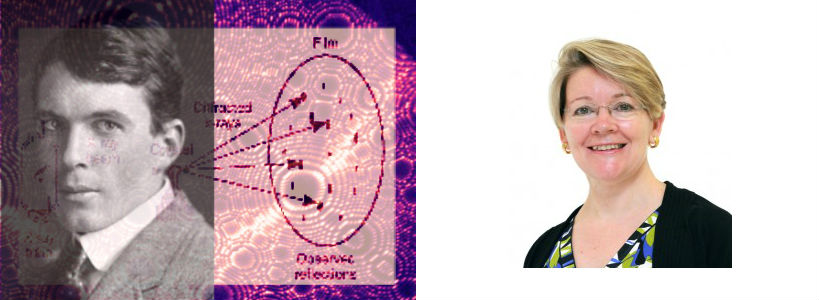Crystallography: Australia’s Bragging Rights
Professor Jenny Martin
School of Chemical & Molecular Sciences, Faculty of Science
University of Queensland
Crystallography impacts on almost every aspect of our life, from the food we eat, the jewellery we wear, the smartphones we use, the medicines we take, and the art that inspires us. It’s even being used on the Curiosity Rover to analyse Martian soil samples.
Recently we celebrated the centenary of crystallography’s founding as a field of science, which holds accomplished Australian William Lawrence Bragg and his father, William Henry, at its foundation. This year marks another centenary, the anniversary of this collegial father-son team jointly winning the Nobel Prize for Physics in 1915 for their work that same tumultuous year on X-rays and Crystal Structure. The youngest ever Nobel Prize winner at 25 years of age, William Lawrence Bragg was hunkered down in the battlefields of Europe, inventing methods for detecting the location of German artillery, and grieving the loss of his brother at Gallipoli. After the war he continued his academic and theoretical work, with subsequent publications: The Crystalline State (1934), Electricity (1936), and Atomic Structure of Minerals (1937).
Bragg’s developments in the area of X-ray analysis on minerals and proteins have become fundamental to a range of diagnostic and analytical settings today.
Join Professor Jenny Martin to learn more about Bragg, this unique field of science and how Australians are celebrating the centenary of a notable Nobel Prize.









